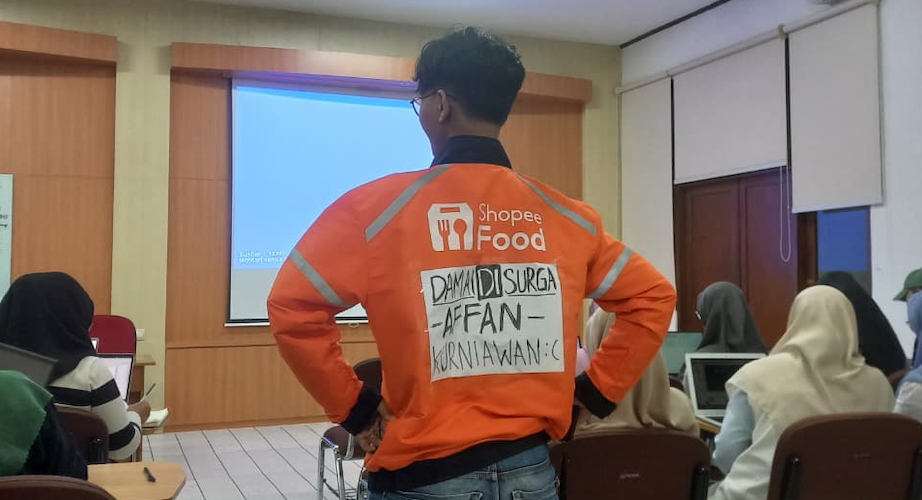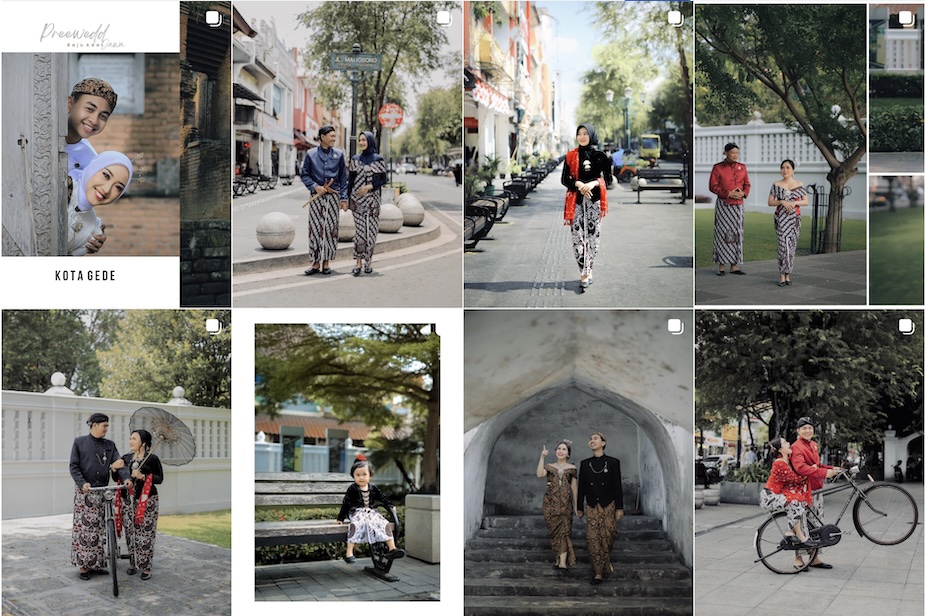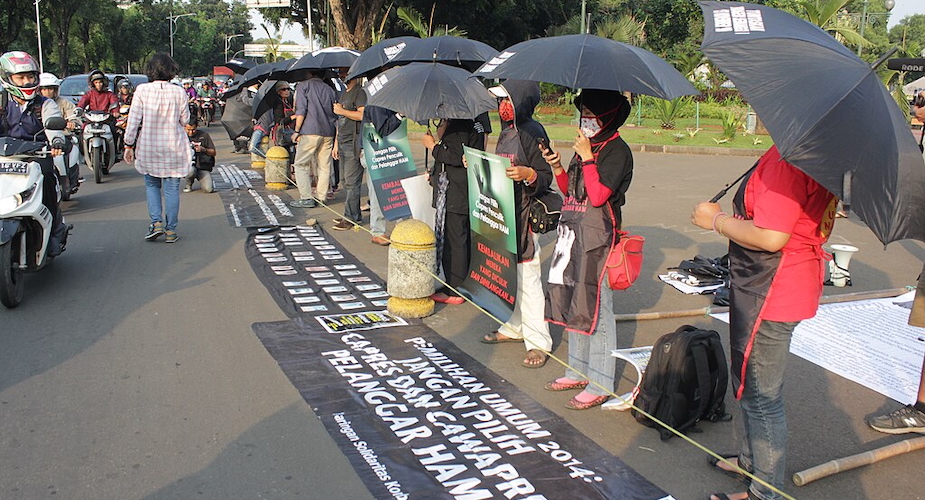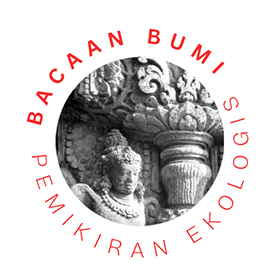Jakarta’s fishermen find new ways to live as the sea disappears
‘So, are we fishermen or farmers then?’ The question came from Azar (a pseudonym), sitting under a bamboo roof while tending a pond of live shrimp. The shrimp were to be sold as fishing bait for visitors. More than a mere inquiry, Azar’s words reflected the social and economic disruptions faced by his community – disruptions that also eroded their cultural identity.
Azar is just one among hundreds with the same question. He lives with his wife and two children at the mouth of the East Flood Canal (Kanal Banjir Timur, BKT) on the Marunda shoreline in North Jakarta at a point locals call ‘Ujung Pantai’ (end of the beach). Most residents were once fishermen, however pollution from the nearby canal has destroyed their livelihoods.
Sources of income have dwindled, and houses are built on land formed by layers of waste. Ujung Pantai is no different from other fishing settlements in Jakarta Bay, which have long been associated with poverty. Coastal communities are marked by slum housing, limited facilities and environmental vulnerability.
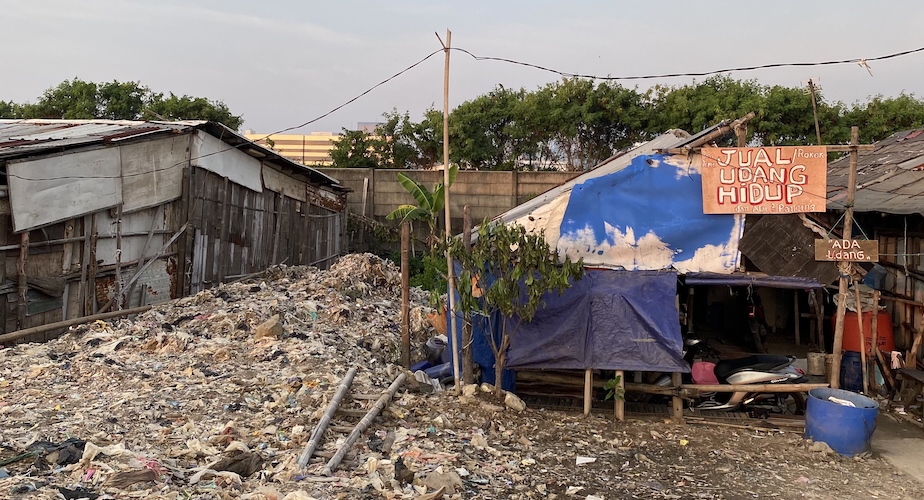
Yet Ujung Pantai residents do not simply give up. Through the ‘bagang’ (offshore bamboo fishing platforms) practice, they remain active in sustaining life amid ecological decline. This article presents an ethnographic portrait of their stories – of how people negotiate and redefine their socio-economic identities in the face of waste dumping and marginalising urban development.
Welcome, neighbours!
From flood canal to industrial port, Marunda’s shoreline has become Jakarta’s dumping ground. It was once seen as a promising place for those seeking a better life in the greater Jakarta region. Located in a strategic area on the north coast, the sea offered rich harvests and became the centre of daily activity, sustaining life in the settlement.
We met with another resident, Suyono (a pseudonym), who used to make his living from catching shrimp for paste. He could do this not only by sailing out to sea but also by casting his nets while walking along the sandy shore. Middlemen would come several times a month to buy his catches, along with those of other fishermen.
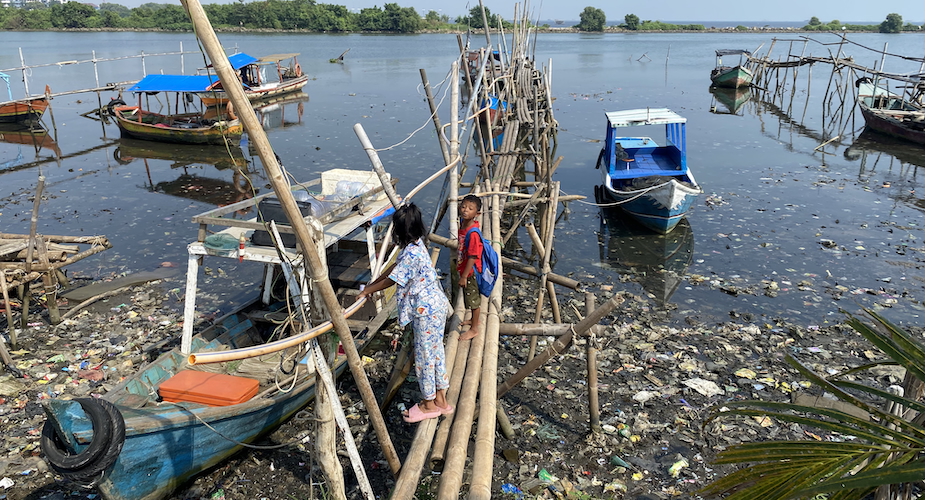
In 2002, construction began on the BKT. Stretching 23.5 kilometres, the canal was built as a state response to the long history of flooding in Jakarta dating back to the colonial era. It empties directly into Marunda Beach at Ujung Pantai. The canal was designed to drain water from at least 16 urban villages across East and North Jakarta. In practice, the BKT transformed Ujung Pantai into a dumping ground, not only for floodwater but also for household waste and industrial pollution.
Suyono recalled that by 2007, the impact of development was already clear. Waste and pollution began to pile up at the beach. Sedimented layers of garbage created new ground along the shoreline. Excavators hauling waste out of the water only added to the accumulation. Today, this ‘new’ ground has become the very surface on which Ujung Pantai residents build their homes and live their everyday lives.
As a result, the sea turned black and foul-smelling. Shrimp, fish and other marine life at Marunda’s waters died off. Suyono told us how bitter and hopeless he was as he watched thousands of fish floating dead on the sea’s surface. He and other fishermen at Ujung Pantai had lost the resources that had once sustained them.
The canal development reflects an official imagination that perceives the coast as merely an endpoint for dumping, rather than a lived cultural space. Yet the state continues to frame the BKT as an absolute solution to flooding.
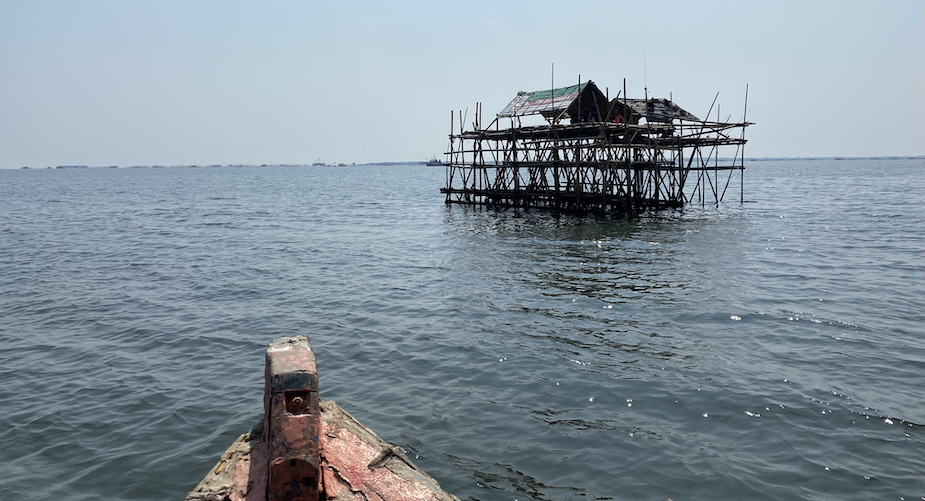
Development in Marunda did not stop with the canal. Its strategic location along maritime trade routes also attracted the construction of Marunda Centre, an industrial complex of factories and warehouses. The industries rely heavily on barges to transport coal, palm oil and other goods, which inevitably release pollutants into the sea.
Equipped with its own ports, they dredged sand from Marunda’s shoreline – the very ground where fishermen once stood to cast their nets. Fishing boats are now prohibited from sailing near the area and those who do face risks from the constant traffic of coal and oil barges. On land, residents started to build their houses using the walls that fence off Marunda Centre.
All of this has taken a heavy toll on Marunda’s marine ecosystem. During one boat ride when we dipped our feet into the water, it turned thick and inky black within moments. The sea no longer sustains life at Ujung Pantai. Fish are gone, middlemen have disappeared and residents have lost their livelihoods. In the end, many gave up fishing and hung up their nets.
Fishermen, farmers, or renters?
At Jakarta’s northern edge, Marunda residents struggle to sustain life amid pollution and fading identities. In conversation with Azar and another fisherman, they confirmed that fishing – once a traditional livelihood, a source of certainty and part of their identity – can no longer be relied upon due to severe pollution.
In response, they have turned to new economic strategies, such as offering fishing tourism on bagang. By renting out bagang, Azar and Suyono earn Rp.25,000 (A$2.29) per passenger for boat transport. In a week, they usually serve six or seven anglers.
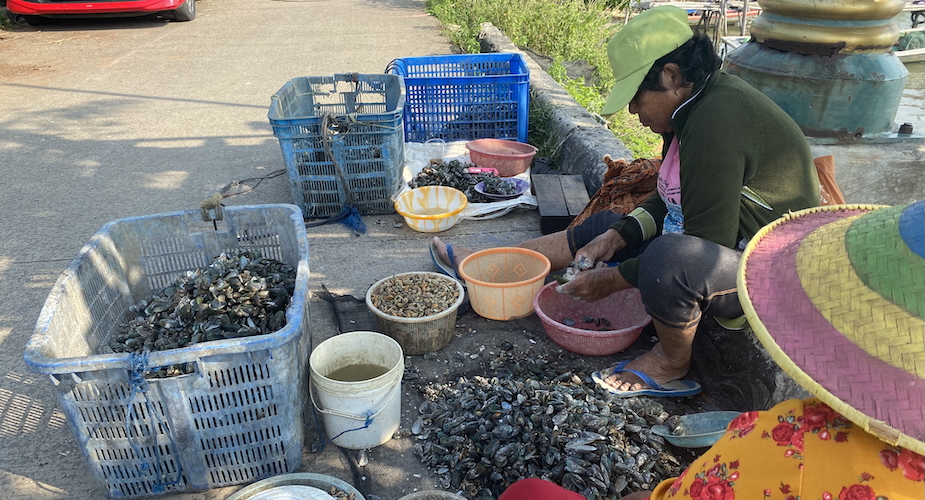
The bagang also functions as a site for farming green mussels and catching fish with ‘bubu’ (fish traps). Mussel seedlings grow naturally on the bamboo foundations and are harvested once mature. On shore, women strip the shells and sell them in traditional markets. Meanwhile, bubu traps, baited and tied to the platform, catch small quantities of fish. From previously relying on boats and nets, the bagang has become the backbone of Marunda’s livelihoods.
‘The fishermen here are fake,’ Azar said with a laugh, referring to the common image of fishermen spending days at sea with nets. In Ujung Pantai, ‘fishermen’ now search for leftover resources, harvesting shells and renting recreational services.
Even so, the yields from green mussels and fish are never high. Many die or are driven away by coal waste that blackens the seawater. At the same time, offering fishing trips – advertised through Facebook groups – depends heavily on the season. Bad weather means few passengers, and business peaks only during holiday periods or some weekends.
The threat of rough weather is never far. In April, a major storm hit Marunda’s coast. High waves and strong winds hurled a massive barge into a bagang. The bamboo structure collapsed instantly, killing one angler and injuring another.
Aided and ingenuity
Amid this disruption and struggle, we also found aspects of Marunda’s development that have opened access and infrastructure in the area. This has brought attention to the Ujung Pantai community – not only through visits from urban recreational groups, but also the arrival of aid programs.
Streams of development aid flow through Marunda. Churches, NGOs, private companies through corporate social responsibility (CSR) programs and local politicians all contribute. In turn, residents have developed strategic ways to maximise and even extend the benefits of such benevolence programs to secure a more adequate livelihood.
Suyono explained that although their housing is illegal, he and his neighbours now have access to tap water. Previously, residents’ proposals for supplies from the PAM Jaya (Jaya City-Owned Tapwater Company had gone nowhere due to the lack of legal housing documents. Their urgent need eventually reached a regional council candidate who was running for the election. A political deal was made: if he won in Marunda, PAM Jaya would provide water access for the community.
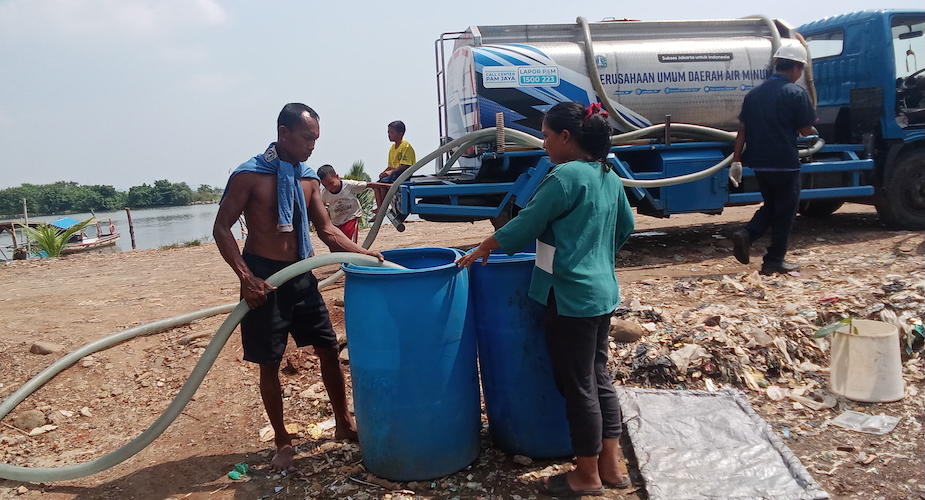
A local kindergarten for Marunda’s children operates entirely on church aid funding. Some of the students attend without paying school fees, whilst others are required to contribute Rp.20,000 per week. The funds are collected to teach children the habit of saving from an early age.
Meana (a pseudonym) is one of the three kindergarten teachers. She explained that collecting cash in this way enables her to run a small money-lending business for her neighbours. All the parents also entrust their savings to Meana. The common reason given is to avoid ‘overspending’ and because saving with Meana incurs no administrative costs. However, clients would give her ‘uang ganti pulpen’ (pen replacement fee) when they withdraw the savings.
Amid the disorder, people still strive to dignify their lives. New economic activities emerge. Ties are forged with local strongmen. Residents adapt to shifting waves of state or NGO aid. All in tune with a passage from Li & Semedi’s Plantation Life, ‘everyone sensed that something was quite wrong with (the coast life), but it was a form they knew how to navigate’.
Josef Christofer Benedict (jchbenedict@gmail.com) is a researcher focusing on ethnography, cultural livelihood and socio-environmental issues. He is currently working with Litbang Harian Kompas. Christisia Natalia Agnes Abadi (nataliacagnes@gmail.com) studied social psychology at Universitas Soegijapranata. Her research explores how culture, displacement, and well-being shape human resilience.




